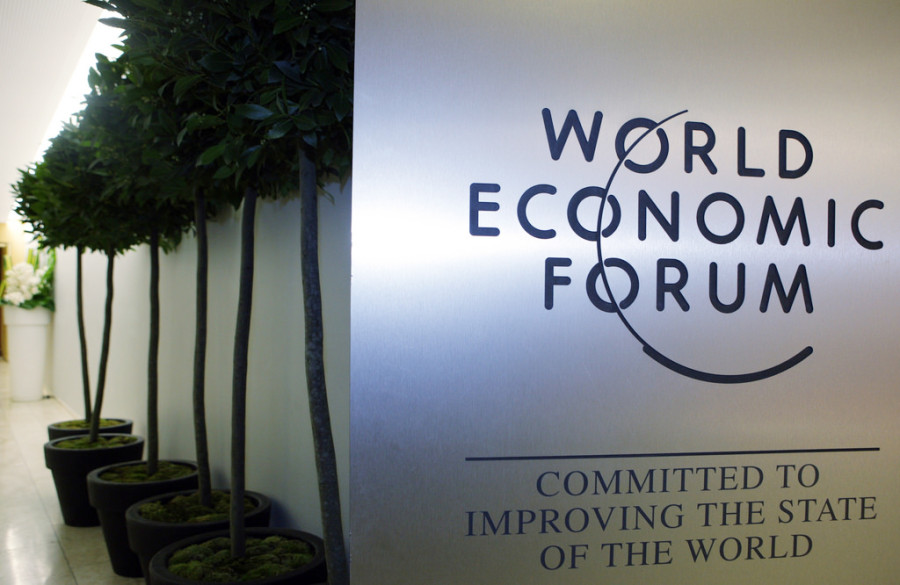Opinion
Trade tensions
One of the key objectives of Prime Minister KP Sharma Oli’s participation in the World Economic Forum in Davos, Switzerland last week was to draw international attention to the investment summit scheduled for March this year.
Bijendra Man Shakya
One of the key objectives of Prime Minister KP Sharma Oli’s participation in the World Economic Forum in Davos, Switzerland last week was to draw international attention to the investment summit scheduled for March this year. Touting Nepal’s business environment, Prime Minister Oli highlighted recent connectivity endeavours and commitment to regional integration as opportunities for investors. Although he mentioned Nepal’s affiliation with global economic integration, he didn’t elaborate on its implications on the least developed economies at the forum, which had as its theme Globalisation 4.0 or the fourth phase of globalisation.
Nepal is without doubt a stern supporter of globalisation. Every successive government has pursued a policy of free trade and investment inflows, but with poor results. Nepal has unfortunately perceived the concept of globalisation as free market and ignored market failure. Globalisation is more than economic integration and free market as is commonly understood. It is also about establishing institutions and implementing compensation mechanisms for equitable distribution of economic growth and opportunities. Countries which took globalisation for granted were caught in an economic trap while those which cautiously launched economic reforms experienced sustained growth and fair distribution of welfare gains.
Great examples
Look at the two neighbouring countries—China and India. Plagued by internal economic woes and closed to the global economy until the late 1970s, China set itself on the path to liberalising its stagnating economy during the 1980s. It took a meticulous policy approach by first establishing special economic zones and offering some of the freedoms of the market economy. This resulted in a surge in growth, and it was extended gradually to the whole of China. Subsequently, China established itself as the world’s manufacturing hub and number one trading nation, outpacing the US and other major industrialised countries. Thriving trade in China attracted huge global investment making it the third important global destination for foreign investment.
Another great example is India’s massive success in its service trade. By utilising the spread of the worldwide web and technology, India earned hundreds of billions of dollars worth of export business annually through its outsourcing hubs clustered in different locations. India’s cautious and gradual move towards economic reform attracted top multinational companies in various economic sectors. Reformed policy measures promoted strategic alliances with internationally renowned companies backing Indian entrepreneurs in replacing its obsolete designing and manufacturing practices and setting themselves to world standards, most notably in the automobile sector. Both China and India accelerated the construction of infrastructure to match their liberalised policy measures. This boosted business efficiency and investment inflows in both countries. These tasks were carried out impartially on a priority basis to adapt with the globalisation trend.
But Nepal’s response to globalisation has been very whimsical and prejudiced instead of being rational and timely, as is well illustrated by two examples. One is the readymade garment sector which went from riches to rags. Benefiting from quota rent, the booming garment export trade sought consolidated production to be able to deal with the competition that would certainly arise after the abolition of the quota system in 2005. In the early 2000s when this export sector was at its height, the private sector advised the government to establish a garment processing zone—close to the country’s only rail-based dry port in Birgunj—to bring together garment manufacturers and ancillary industries. Its core objective was to raise the industry’s production and delivery efficiency in order to address pricing and delivery sensitivity in the global clothing trade. The government disregarded the private sector’s request until 2010, but by then it was too late. Consequently, garment exports plunged.
Another example is the carpet industry. Once positioned as the country’s number one export product, this labour-intensive sector was hindered by labour agitation at home and threatened by a consumer boycott abroad due to its inability to meet buyer requirements. Lack of adequate policy support not only weakened its response to global trends in product designing, branding and marketing, it fragmented the entire industry. The carpet industry thus became history.
Trade in tatters
The collapse of these two leading export sectors resulted in a huge loss to the country’s overall export earnings. The combined export value of these two products—which was as high as Rs25 billion or one-fourth of the current export value during their heyday—shrank to less than half in later years. Today, there is not a single product which earns close to that amount through exports. Virtually all export products are seeing a downward trend as shown by this data: Exports as a percentage of the country’s Gross Domestic Product dropped from 6 percent a few years ago to 4 percent currently. Even worse, the country’s trade deficit swelled to a whopping Rs1,200 billion, or equivalent to about one-third of the Gross Domestic Product, between 2017 and 2018.
With trade in tatters, Nepal will find it difficult to attract investment inflows. Normally, trade and investment complement economic growth. Globally integrated economies will initially experience static gains from trade and then dynamic gains from economies of scale, investment flows and technology transfer. For a vulnerable economy like Nepal—which neither possesses a huge internal market like India and China, or performs well in trade like Bangladesh in garment exports—attempting to lure foreign investors is nothing more than building castles in the air. The government first needs to fix the trouble in trade to broaden the nation’s comparative advantage to show the world, should it gain investor trust.
Shakya is an associate professor in economics at Tribhuvan University.




 10.12°C Kathmandu
10.12°C Kathmandu









%20(1).jpg&w=300&height=200)

